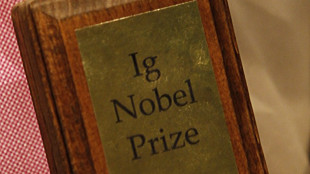
-
 Women sommeliers are cracking male-dominated wine world open
Women sommeliers are cracking male-dominated wine world open
-
Exhibition of Franco-Chinese print master Zao Wou-Ki opens in Hong Kong

-
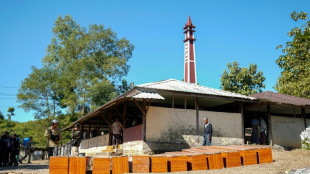 Myanmar junta denies killing civilians in hospital strike
Myanmar junta denies killing civilians in hospital strike
-
Why SpaceX IPO plan is generating so much buzz

-
 Thailand continues Cambodia strikes despite Trump truce calls
Thailand continues Cambodia strikes despite Trump truce calls
-
US envoy to meet Zelensky, Europe leaders in Berlin this weekend

-
 North Korea acknowledges its troops cleared mines for Russia
North Korea acknowledges its troops cleared mines for Russia
-
US unseals warrant for tanker seized off Venezuelan coast

-
 Cambodia says Thailand still bombing hours after Trump truce call
Cambodia says Thailand still bombing hours after Trump truce call
-
Machado urges pressure so Maduro understands 'he has to go'

-
 Best Gold Investment Companies in USA Announced (Augusta Precious Metals, Lear Capital, Robinhood IRA and More Ranked)
Best Gold Investment Companies in USA Announced (Augusta Precious Metals, Lear Capital, Robinhood IRA and More Ranked)
-
Leinster stutter before beating Leicester in Champions Cup

-
 World stocks mostly slide, consolidating Fed-fuelled gains
World stocks mostly slide, consolidating Fed-fuelled gains
-
Crypto firm Tether bids for Juventus, is quickly rebuffed

-
 Union sink second-placed Leipzig to climb in Bundesliga
Union sink second-placed Leipzig to climb in Bundesliga
-
US Treasury lifts sanctions on Brazil Supreme Court justice

-
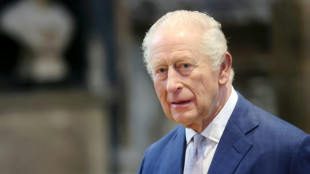 UK king shares 'good news' that cancer treatment will be reduced in 2026
UK king shares 'good news' that cancer treatment will be reduced in 2026
-
Wembanyama expected to return for Spurs in NBA Cup clash with Thunder

-
 Five takeaways from Luigi Mangione evidence hearings
Five takeaways from Luigi Mangione evidence hearings
-
UK's king shares 'good news' that cancer treatment will be reduced in 2026
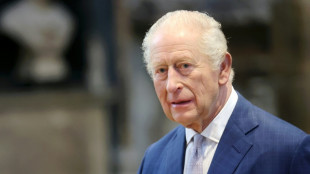
-
 Steelers' Watt undergoes surgery to repair collapsed lung
Steelers' Watt undergoes surgery to repair collapsed lung
-
Iran detains Nobel-prize winner in 'brutal' arrest

-
 NBA Cup goes from 'outside the box' idea to smash hit
NBA Cup goes from 'outside the box' idea to smash hit
-
UK health service battles 'super flu' outbreak

-
 Can Venezuela survive US targeting its oil tankers?
Can Venezuela survive US targeting its oil tankers?
-
Democrats release new cache of Epstein photos

-
 Colombia's ELN guerrillas place communities in lockdown citing Trump 'intervention' threats
Colombia's ELN guerrillas place communities in lockdown citing Trump 'intervention' threats
-
'Don't use them': Tanning beds triple skin cancer risk, study finds

-
 Nancy aims to restore Celtic faith with Scottish League Cup final win
Nancy aims to restore Celtic faith with Scottish League Cup final win
-
Argentina fly-half Albornoz signs for Toulon until 2030

-
 Trump says Thailand, Cambodia have agreed to stop border clashes
Trump says Thailand, Cambodia have agreed to stop border clashes
-
Salah in Liverpool squad for Brighton after Slot talks - reports

-
 Marseille coach tips Greenwood as 'potential Ballon d'Or'
Marseille coach tips Greenwood as 'potential Ballon d'Or'
-
Draw marks 'starting gun' toward 2026 World Cup, Vancouver says

-
 Thai PM says asked Trump to press Cambodia on border truce
Thai PM says asked Trump to press Cambodia on border truce
-
Salah admired from afar in his Egypt home village as club tensions swirl

-
 World stocks retrench, consolidating Fed-fuelled gains
World stocks retrench, consolidating Fed-fuelled gains
-
Brazil left calls protests over bid to cut Bolsonaro jail time

-
 Trump attack on Europe migration 'disaster' masks toughening policies
Trump attack on Europe migration 'disaster' masks toughening policies
-
US plan sees Ukraine joining EU in 2027, official tells AFP

-
 'Chilling effect': Israel reforms raise press freedom fears
'Chilling effect': Israel reforms raise press freedom fears
-
Iran frees child bride sentenced to death over husband's killing: activists

-
 No doubting Man City boss Guardiola's passion says Toure
No doubting Man City boss Guardiola's passion says Toure
-
Youthful La Rochelle name teen captain for Champions Cup match in South Africa

-
 World stocks consolidate Fed-fuelled gains
World stocks consolidate Fed-fuelled gains
-
British 'Aga saga' author Joanna Trollope dies aged 82
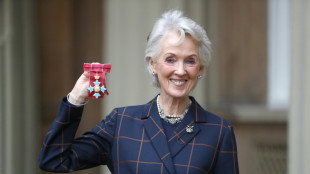
-
 Man Utd sweat on Africa Cup of Nations trio
Man Utd sweat on Africa Cup of Nations trio
-
EU agrees three-euro small parcel tax to tackle China flood

-
 Taylor Swift breaks down in Eras documentary over Southport attack
Taylor Swift breaks down in Eras documentary over Southport attack
-
Maresca 'relaxed' about Chelsea's rough patch


Webb observations point to a shorter cosmic dark age
The first galaxies may have formed far earlier than previously thought, according to observations from the James Webb Space Telescope that are reshaping astronomers' understanding of the early universe.
Researchers using the powerful observatory have now published papers in the journal Astrophysical Journal Letters, documenting two exceptionally bright, exceptionally distant galaxies, based on data gathered within the first few days of Webb going operational in July.
Their extreme luminosity points to two intriguing possibilities, astronomers on a NASA press call said Thursday.
The first is that these galaxies are very massive, with lots of low-mass stars like galaxies today, and had to start forming 100 million years after the Big Bang which occurred 13.8 billion years ago.
That is 100 million years earlier than the currently held end of the so-called cosmic dark age, when the universe contained only gas and dark matter.
A second possibility is that they are made up of "Population III" stars, which have never been observed but are theorized to have been made of only helium and hydrogen, before heavier elements existed.
Because these stars burned so brightly at extreme temperatures, galaxies made of them would not need to be as massive to account for the brightness seen by Webb, and could have started forming later.
"We are seeing such bright, such luminous galaxies at this early time, that we're really uncertain about what is happening here," Garth Illingworth of the University of California at Santa Cruz told reporters.
The galaxies' rapid discovery also defied expectations that Webb would need to survey a much larger volume of space to find such galaxies.
"It's sort of a bit of a surprise that there are so many that formed so early," added astrophysicist Jeyhan Kartaltepe of the Rochester Institute of Technology.
- Most distant starlight -
The two galaxies were found to have definitely existed approximately 450 and 350 million years after the Big Bang.
The second of these, called GLASS-z12, now represents the most distant starlight ever seen.
The more distant objects are from us, the longer it takes for their light to reach us, and so to gaze at the distant universe is to see into the deep past.
As these galaxies are so distant from Earth, by the time their light reaches us, it has been stretched by the expansion of the universe and shifted to the infrared region of the light spectrum.
Webb can detect infrared light at a far higher resolution than any instrument before it.
Illingworth, who co-authored the paper on GLASS-z12, told AFP disentangling the two competing hypotheses would be a "real challenge," though the Population III idea was more appealing to him, as it would not require upending existing cosmological models.
Teams are hoping to soon use Webb's powerful spectrograph instruments -- which analyze the light from objects to reveal their detailed properties -- to confirm the galaxies' distance, and better understand their composition.
The Atacama Large Millimeter/submillimeter Array (ALMA), a ground telescope in northern Chile, might also be able to help in weighing the mass of the two galaxies, which would help decide between the two hypotheses.
"JWST has opened up a new frontier, bringing us closer to understanding how it all began," summed up Tommaso Treu of the University of California at Los Angeles, principal investigator on one of the Webb programs.
P.Mathewson--AMWN

